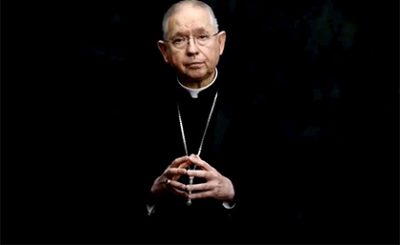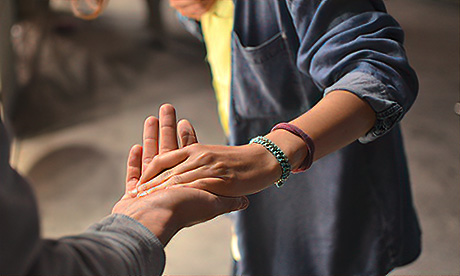When Richard and Angela Wolohan created the Wolohan Family Foundation in 1986, they sought to use their wealth, derived in part from the sale of a successful lumber company, to support organizations and charities that appealed to their shared Catholic faith.
Nearly 25 years later, both the founders had passed away and their seven children assumed control of the foundation.
Michael Wolohan, the youngest of his siblings and the foundation’s president, said his parents imbued the foundation with “a Catholic-informed perspective,” which for the Wolohan siblings meant focusing on “the corporal works of mercy: to feed the hungry, to give water to the thirsty, homes for the homeless.”
Ensuring that their parents’ commitment to their Catholic faith continued through the Michigan-based foundation was key.
With Michael and his siblings now north of age 65, they are preparing to hand control over to a new cohort of descendants who do not know the founders as intimately and who came of age in a radically different world.
Catholic ministries face an uncertain financial future as religiosity decreases among younger Americans—including, perhaps, descendants of prominent Catholic philanthropic leaders.
This process can present challenges not just for the Wolohan family, but for other private Catholic family foundations throughout the country, which each year disburse tens of millions of dollars to Catholic ministries.
Those ministries could face an uncertain financial future, some analysts say, as religiosity decreases among younger Americans—including, perhaps, descendants of prominent Catholic philanthropic leaders.
While there are no definitive estimates of how much foundation money makes its way to Catholic-affiliated organizations each year, it likely runs into the billions.
According to the Catholic Funding Guide, an online subscription-based search tool listing foundations that include Catholic ministries and organizations in their giving portfolios, about 2,200 of these private foundations, church-based grantmakers, religious communities and international funders control assets of more than $39 trillion and annually give more than $14 billion in support.
“Part of that engagement is passing on faith and values that began with the foundation and has been incorporated in everything that we do.”

President of the US Catholic Bishops Conference, Archbishop Gomez (above), has a serious misunderstanding, and perhaps even a willed ignorance, about the goals and motivations of contemporary social justice movements. However, a leading theologian at Fordam University theology, Fr Bryan Massingale says “most Black Catholics I know advocate Black Lives Matter precisely because of our belief in the universal human dignity of all people as images of God.”
Gen next
“We know engaging the next generation is beneficial to everybody, and it strengthens our mission,” said Maria Raskob.
Ms. Raskob chairs the board of the Catholic philanthropic consortium Fadica (Foundations and Donors Interested in Catholic Activities) and is herself a fourth-generation descendant of one of the nation’s prominent Catholic philanthropic families.
“Part of that engagement is passing on faith and values that began with the foundation and has been incorporated in everything that we do,” she said.
John and Helena Raskob founded the Raskob Foundation for Catholic Activities in 1945.
The foundation has disbursed more than $200 million to Catholic organizations since its founding.
Now the Delaware-based foundation operates with a membership model: Descendants of John and Helena can be as involved as much or as little in the grantmaking process as they desire. Making sure that younger members of the family want to participate—and that they understand the intent of the founders—is a key priority for the Raskob Foundation.
And that formation starts young.
Younger generations of would-be philanthropists, like their peers more broadly, are motivated by issues and causes more than by institutional loyalty.
“The next generation is exposed [to] and involved with the foundation at a really early age,” Ms. Raskob said.
Some parents bring their children to service events organized by the foundation or even to annual meetings.
Once descendants turn 18, they are able to participate in more formal ways as well, exposing them to the church’s vast social justice ministry. That can help forge strong bonds, she said, between family members and the institutional church, even if the individual descendant is not religious.
“What younger members, and any members, see is Catholic social teaching in action,” she said, learning how it “covers health care, social services, peace and justice, and environmental issues.”
“This is inspiring to witness, and all members are able to find aspects of the work that are appealing to them,” Ms. Raskob said.
Maria Raskob: “We know engaging the next generation is beneficial to everybody, and it strengthens our mission.” Continue reading
Additional readingNews category: Analysis and Comment.




